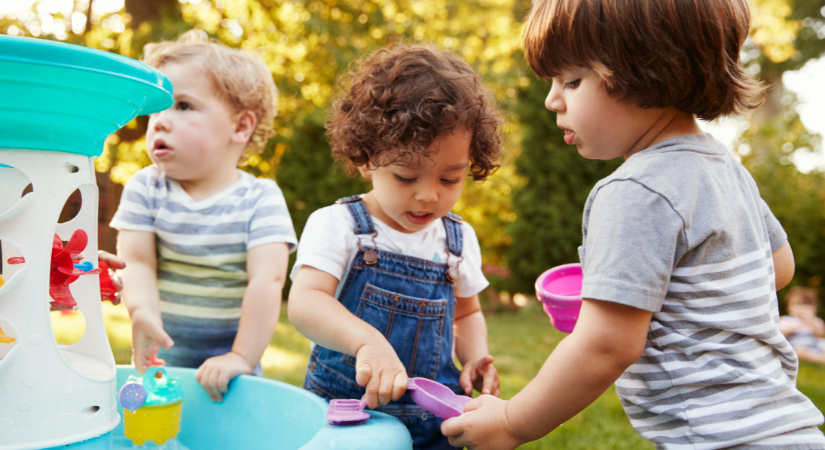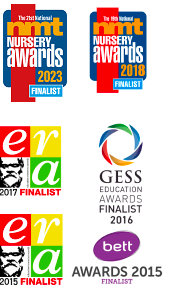Summer is a great time to get outside and explore the cooling nature of water with all its interesting properties. Let’s explore 10 fun water play activity ideas you can enjoy with the children at your nursery setting!
1. Splash Pool Fun:
Set up a fun and refreshing water play area by inflating a small plastic pool or placing a water table in a shaded outdoor space. Fill the pool with a few inches of water and provide an assortment of buckets, cups, and watering cans for the children to scoop, pour, and transfer the water, fostering their motor skills and exploration. To add an extra layer of excitement, toss in floating toys like rubber ducks or boats, encouraging imaginative play as the children navigate their vessels through the mini pool.
Benefits of Splash Pool Fun:
Physical Development: Splash Pool Fun offers children an opportunity to engage in physical activities such as scooping, pouring, and transferring water using buckets, cups, and watering cans. These actions promote the development of fine motor skills, hand-eye coordination, and muscle strength.
Sensory Exploration: The tactile experience of water play stimulates sensory exploration. Children can feel the water’s temperature, texture, and weight, enhancing their sensory awareness and understanding of basic scientific concepts.
Creativity and Imagination: By incorporating floating toys like rubber ducks or boats into the splash pool, children are encouraged to engage in imaginative play. They can create stories and scenarios as they navigate their toys through the water, fostering creativity and storytelling skills.
Social Interaction: Splash pool activities are often enjoyed in groups, promoting social interaction and cooperative play. Children can take turns using the water tools and toys, negotiate roles, and collaborate on water-based projects, fostering important social skills like communication and teamwork.
Cognitive Development: Water play involves problem-solving and experimentation. Children learn cause-and-effect relationships as they observe how water behaves when poured or manipulated. They also engage in basic mathematical concepts such as volume and displacement when filling and emptying containers.
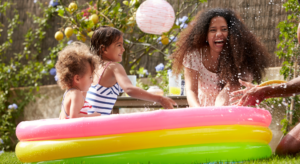
2. Underwater Treasure Hunt
To create an exciting underwater adventure, fill a large shallow tub or bin with a few inches of water. Scatter an assortment of colourful objects along the bottom, such as plastic rings, fake coins, or small sea creature toys to represent hidden “treasures.” Provide each child with a small net or encourage them to use their hands to “fish out” and discover the various sunken treasures. As they scoop through the water, they’ll delight in the thrill of uncovering each new vibrant item, developing their hand-eye coordination and fine motor skills along the way.
Benefits of Underwater Treasure Hunt:
Fine Motor Skill Development: Engaging in an underwater treasure hunt requires children to use their hands or small nets to carefully scoop and grab objects from the water. This activity helps develop fine motor skills, including precision and hand-eye coordination, as they navigate through the water to retrieve the treasures.
Sensory Exploration: The underwater environment provides a unique sensory experience for children. They can feel the texture and weight of objects underwater, enhancing their tactile perception and sensory awareness.
Cognitive Skills: The underwater treasure hunt encourages cognitive skills such as problem-solving and strategic thinking. Children must use observational skills to locate hidden objects and plan their movements to capture them successfully.
Imaginative Play: By imagining themselves as underwater explorers searching for hidden treasures, children engage in imaginative play. This type of role-playing fosters creativity and storytelling abilities as they create narratives around their discoveries.
Social Interaction: Underwater treasure hunts can be conducted in groups, promoting social interaction and cooperation. Children can take turns searching for treasures, share their findings with peers, and collaborate on the adventure, fostering communication and teamwork skills.
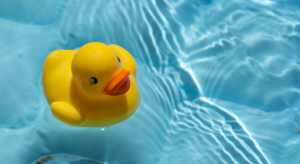
3. Outdoor Water Wall:
Construct a captivating outdoor water wall using recycled materials like plastic bottles, PVC pipes, funnels, and tubes. Arrange these components vertically on a fence, wall, or sturdy surface, creating various paths and channels for water to travel through. Set up a water source, such as a bucket or plastic container, at the top of the structure, allowing children to pour water and observe how it cascades and trickles through the different pathways. As they experiment with the flow, they’ll develop an understanding of gravity, cause and effect, and the properties of water while fostering their curiosity and problem-solving skills.
Encourage children to experiment with the water flow by adjusting the hose or pouring water from different heights and angles.
Benefits of Outdoor Water Wall:
STEM Learning: The construction and exploration of an outdoor water wall introduces children to STEM (Science, Technology, Engineering, and Mathematics) concepts. They learn about gravity, cause and effect, and the properties of water as they observe how it flows through the different pathways and channels of the water wall.
Problem-Solving Skills: Engaging with a water wall encourages children to experiment and problem-solve. They can manipulate the flow of water by adjusting the components of the wall, such as changing the angle of the pipes or adding obstacles to redirect the water, fostering critical thinking and creativity.
Sensory Stimulation: Water play in an outdoor setting provides rich sensory experiences. Children can feel the textures of water as it flows through different materials like pipes and funnels, enhancing their sensory awareness and exploration.
Physical Development: Building and interacting with an outdoor water wall involves physical activity. Children use their muscles and coordination skills to pour, lift, and manipulate water, promoting gross and fine motor development.
Creativity and Curiosity: The open-ended nature of the water wall sparks children’s curiosity and creativity. They can experiment with different arrangements of materials and observe the outcomes, fostering a sense of wonder and discovery about the natural world.
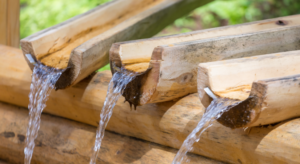
4. Bubble Station:
Create a whimsical bubble station by gathering an assortment of bubble wands, bubble machines, or even bubble guns. Mix together a simple bubble solution using water, dish soap, and a bit of corn syrup or glycerin. Provide the children with containers filled with the bubble mixture and demonstrate how to gently wave the wands or press the buttons on the machines to produce an array of delightful bubbles. Encourage them to chase, pop, and revel in the ephemeral beauty of the bubbles as they float through the air, fostering their motor skills and sense of wonder. This playful water play activity is sure to bring smiles and laughter to any Early Years setting.
Benefits of Bubble Station:
Motor Skills Development: Engaging with a bubble station promotes the development of fine and gross motor skills. Children use hand-eye coordination and precision to wave bubble wands or operate bubble machines, enhancing their control over body movements.
Sensory Stimulation: Bubbles provide a multi-sensory experience for children. They see the shimmering colours, feel the textures of the bubbles when they pop, and hear the soft sounds they make, stimulating various senses and enhancing sensory awareness.
Language and Communication: Participating in a bubble station encourages language development as children communicate their excitement and observations with peers and adults. They may use descriptive words to talk about the bubbles, fostering vocabulary expansion and communication skills.
Emotional Regulation: Blowing and popping bubbles can have a calming effect on children. The rhythmic nature of the activity and the visual appeal of the bubbles can help reduce stress and anxiety, promoting emotional regulation and well-being.
Wonder and Curiosity: Bubbles evoke a sense of wonder and curiosity in young children. They marvel at the magical quality of bubbles floating through the air and may ask questions about how bubbles form and why they float, fostering a natural curiosity about the world around them.
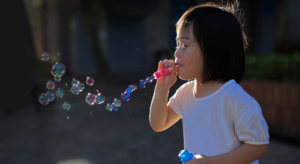
5. Beach Play:
Transform your Early Years setting into a mini beach by bringing in a large plastic tub or kiddie pool filled with clean play sand. Set up a separate water station nearby with buckets or pitchers of water for the children to “flood” their sandcastles and dig moats. Provide an assortment of tools like shovels, rakes, and moulds for building sandcastles, sculpting shapes, and exploring the textures of wet and dry sand. As the children immerse themselves in this engaging beach play, they’ll exercise their creativity, develop fine motor skills, and learn valuable concepts like cause and effect as they witness how the addition of water affects the malleability of the sand.
Benefits of Beach Play:
Creativity and Imagination: Beach play encourages children to use their imagination and creativity. They can build elaborate sandcastles, sculpt unique shapes, and create imaginary landscapes using sand and water, fostering creative expression and storytelling skills.
Fine Motor Skill Development: Manipulating sand and water with tools such as shovels, rakes, and moulds promotes the development of fine motor skills. Children refine their hand-eye coordination and finger dexterity as they scoop, pour, and mould the sand.
Sensory Stimulation: Beach play provides rich sensory experiences. Children experience the textures of wet and dry sand, the coolness of water, and the sounds of sand being shaped and moved, enhancing sensory exploration and awareness.
Scientific Exploration: Engaging in beach play allows children to observe cause and effect relationships. They learn how adding water affects the texture and malleability of the sand, promoting basic understanding of scientific concepts related to materials and properties.
Social Interaction and Collaboration: Beach play often occurs in group settings, promoting social interaction and cooperation. Children collaborate on building projects, share tools and ideas, and negotiate roles and responsibilities, fostering communication and teamwork skills.
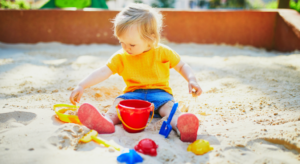
6. Car Wash Station:
Create a fun and imaginative car wash station by filling a large bin or shallow tub with warm, soapy water. Gather an assortment of toy cars, trucks, and bikes for the children to “wash”. Provide them with soft sponges, brushes, and even squirt bottles filled with clean water to mimic the real car wash experience. As the children dip their toy vehicles into the soapy water and scrub away, they’ll develop their fine motor skills, engage in pretend play, and learn the importance of cleaning and caring for their belongings. You can even set up a drying station with towels for them to wipe down their freshly “washed” toys.
Benefits of Car Wash Station:
Fine Motor Skill Development: Engaging in the car wash station activity requires children to use their hands and fingers to manipulate sponges, brushes, and squirt bottles. This promotes the development of fine motor skills, including hand-eye coordination and manual dexterity.
Pretend Play and Imagination: The car wash station encourages imaginative play as children pretend to be car wash attendants. They create imaginary scenarios, mimic real-life activities, and role-play different roles, fostering creativity and storytelling skills.
Understanding of Hygiene and Care: Participating in the car wash activity helps children learn about the importance of cleanliness and caring for belongings. They develop a sense of responsibility as they “wash” their toy vehicles and understand the concept of maintenance and upkeep.
Social and Communication Skills: Setting up a car wash station encourages social interaction and communication among children. They collaborate on washing different vehicles, take turns using tools, and engage in cooperative play, promoting teamwork and peer interaction.
Sensory Stimulation: The tactile experience of scrubbing and rinsing toy vehicles in soapy water provides sensory stimulation. Children experience different textures, temperatures, and sensations, enhancing sensory exploration and awareness.
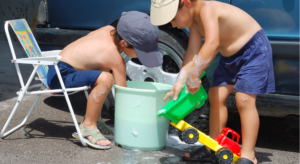
7. Nature Soup Kitchen:
Take the children on a nature walk to gather a variety of natural materials like leaves, flowers, twigs, and pinecones. Once back inside, provide each child with a bowl or container and access to a water source. Encourage them to create their own unique “nature soups” by adding the collected natural ingredients to their bowls and mixing them in water. As they stir and combine the elements, they’ll explore textures, colours, and the way different materials interact with water. This open-ended water play activity idea fosters their creativity, fine motor skills, and appreciation for the natural world around them. You can even provide plastic utensils or spoons for added imaginative play.
Benefits of Nature Soup Kitchen:
Creativity and Imagination: Engaging in the nature soup kitchen activity encourages children to use their creativity and imagination. They explore different textures, colours, and shapes of natural materials as they create their own unique “nature soups,” fostering imaginative play and storytelling.
Fine Motor Skill Development: Manipulating natural materials and utensils in the nature soup kitchen promotes the development of fine motor skills. Children use their fingers to pick up and manipulate leaves, flowers, and twigs, enhancing hand-eye coordination and manual dexterity.
Sensory Exploration: Nature soup kitchen provides rich sensory experiences for children. They feel the textures of leaves, flowers, and pinecones, observe the colours and shapes of the natural materials, and experience the tactile sensation of mixing them with water, enhancing sensory exploration and awareness.
Appreciation for Nature: Gathering natural materials during a nature walk and using them to create “nature soups” encourages children to appreciate the natural world around them. They learn about the diversity of plants and materials found in nature, fostering a sense of connection and stewardship towards the environment.
Social Interaction and Communication: Engaging in the nature soup kitchen activity promotes social interaction and communication among children. They collaborate on gathering materials, share ideas and experiences, and negotiate roles and responsibilities, fostering teamwork and peer interaction.
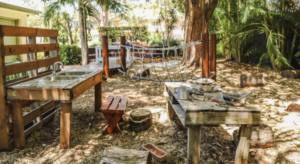
8. Water Relay Races:
Organise an exciting and active water play experience by setting up two large containers or buckets at opposite ends of an outdoor or indoor space. Divide the children into teams and provide them with a variety of tools like cups, sponges, or small watering cans to transfer water from one container to the other. Establish a starting line and have teams line up in relay formation, taking turns running to fill their tools with water from the first container and carefully transporting it to the second container. The first team to successfully transfer and fill their container wins the race! This engaging activity encourages teamwork, gross motor skills, and an understanding of capacity as children strategise the most efficient way to transport the water.
Benefits of Water Relay Races:
Teamwork and Cooperation: Water relay races promote teamwork and cooperation among children. Working together in teams, they strategize and communicate to efficiently transfer water from one container to another, fostering collaboration and social skills.
Gross Motor Skill Development: Participating in water relay races involves physical activity that promotes gross motor skill development. Children run, balance, and coordinate their movements as they carry and transfer water, enhancing their physical coordination and agility.
Problem-Solving Skills: Engaging in water relay races encourages children to think critically and problem-solve. They must strategize the most efficient way to transport the water using the provided tools, fostering problem-solving skills and cognitive development.
Understanding of Capacity: Water relay races provide a practical context for children to explore concepts of capacity and volume. They learn about the amount of water each tool can hold and how to judge when it’s filled to capacity, promoting an understanding of mathematical concepts.
Social Interaction and Communication: Participating in water relay races promotes social interaction and communication among children. They cheer for their teammates, encourage each other, and celebrate successes together, fostering positive peer relationships and communication skills.
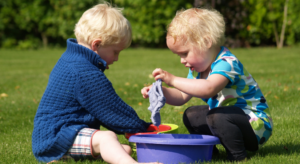
9. Watercolour Art:
Create an inviting outdoor art studio by setting up a large easel or taping paper to a fence or wall. Provide the children with watercolour paint palettes or shallow containers filled with vibrant liquid watercolours. Encourage them to experiment by dipping their brushes into the separate colour wells and a cup of clean water to dilute and blend the hues directly on their paper canvases. For added creativity, you can provide spray bottles filled with water for them to create unique splatter paint effects. This open-ended activity allows children to explore colour mixing, develop their fine motor skills, and express their artistic talents while enjoying the refreshing sensation of working with water-based paints outdoors.
Benefits of Watercolour Art:
Creative Expression: Watercolour art encourages children to express their creativity and imagination. They experiment with different colours, techniques, and brushstrokes to create unique artworks, fostering self-expression and artistic exploration.
Fine Motor Skill Development: Engaging in watercolour art promotes the development of fine motor skills. Children refine their hand-eye coordination and manual dexterity as they hold and manipulate paint brushes to apply paint to paper, enhancing their control and precision.
Color Exploration and Mixing: Watercolour art provides opportunities for children to explore colours and experiment with colour mixing. They observe how different hues blend and interact when applied to paper, promoting an understanding of colour theory and enhancing visual perception skills.
Sensory Stimulation: Working with watercolour paints offers sensory stimulation for children. They experience the tactile sensation of paintbrushes and paper, observe the vibrant colours and textures of the paint, and enjoy the refreshing sensation of working with water-based materials, enhancing sensory exploration and awareness.
Emotional Expression and Relaxation: Watercolour art can have a calming and therapeutic effect on children. The process of painting allows them to express their emotions and feelings creatively, promoting emotional expression and relaxation as they focus on the rhythmic movement of brushstrokes and the soothing sensation of working with watercolours.
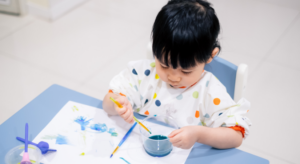
10. Sponge Toss:
Prepare for a refreshing and engaging game by filling a bucket or basin with clean water and gathering an assortment of sponges in various sizes and colours. Set up a designated playing area, either outdoors or in a spacious indoor area, and establish targets or boundaries for the sponge toss. Demonstrate how to properly soak the sponges in the water, being mindful not to oversaturate them. Then, have the children stand apart at a suitable distance and take turns tossing the wet sponges to one another or aiming for the predetermined targets. As they master their throwing and catching techniques, they’ll develop essential skills such as hand-eye coordination, gross motor control, and turn-taking, all while enjoying the cool sensation of the water-soaked sponges.
Benefits of Sponge Toss:
Hand-Eye Coordination: Sponge toss promotes the development of hand-eye coordination as children aim and throw the wet sponges towards targets or to their peers. They learn to judge distance and trajectory, enhancing their ability to coordinate visual input with hand movements.
Gross Motor Skill Development: Engaging in sponge toss involves gross motor movements such as throwing, catching, and dodging. Children strengthen their muscles and improve their gross motor control as they participate in the active and dynamic nature of the game.
Social Interaction: Sponge toss encourages social interaction among children as they take turns tossing and catching sponges or aiming for targets together. They communicate with their peers, negotiate rules, and cooperate to achieve common goals, fostering social skills and peer relationships.
Turn-Taking and Sportsmanship: Participating in sponge toss teaches children the importance of turn-taking and good sportsmanship. They learn to wait patiently for their turn, support their peers, and gracefully accept both successes and challenges, promoting positive social behaviours and emotional regulation.
Sensory Stimulation: The cool sensation of water-soaked sponges provides sensory stimulation for children. They experience the tactile sensation of handling the wet sponges, feel the weight and texture as they throw and catch them, and enjoy the refreshing feeling of the water, enhancing sensory exploration and awareness.
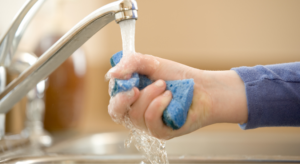
Incorporating water play activities into your nursery setting can enhance and enrich the children’s early learning development and enjoyment. But we understand that managing a busy nursery and keeping on top of administrative tasks can detract time for creative activity planning. That’s where our nursery management software, eymanage comes in. Our solution is designed to ease and streamline your day-to-day operations.
To learn more about how eyworks can help give you more time to foster a nurturing and stimulating environment, contact our friendly team today or book a demo.
